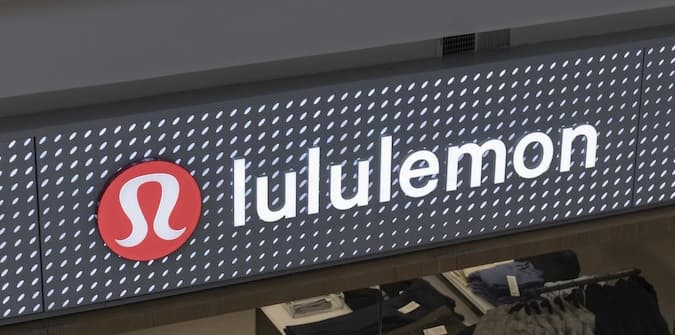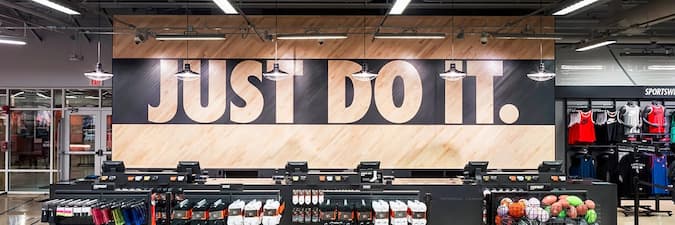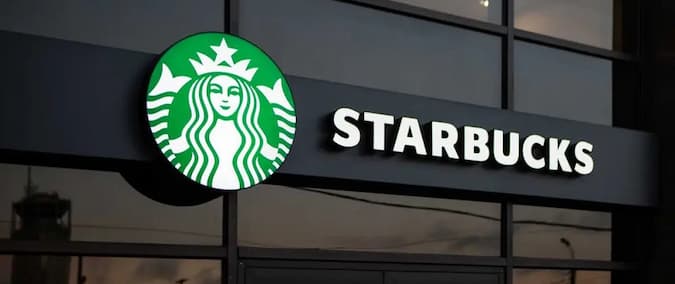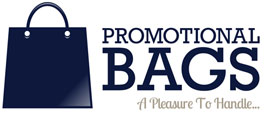
12 August, 2024
Utilising QR Codes on Promotional Bags
Bridging the gap between offline and online marketing is essential for businesses looking to engage with their customers effectively. One innovative strategy is the use of QR codes on promotional bags. QR codes, short for Quick Response codes, have transformed the way businesses connect with their audience by seamlessly linking physical marketing materials to the online world. Using them can be a game-changer for your marketing efforts. Something as simple as promotional tote bags can become a driving force for a marketing campaign when QR codes are enlisted.
Understanding the Power of QR Codes
QR Code Basics
QR codes, short for Quick Response codes, are two-dimensional barcodes composed of black squares and white spaces arranged on a grid. These codes can vary in size and complexity, accommodating different types and amounts of data. They can store a wide range of information, including text, numeric data, URLs, contact information (vCards), Wi-Fi network details, and more. The data is encoded in the pattern of the black and white squares.
To access the information stored in a QR code, users need a QR code scanner, which is typically available as a smartphone app. When users open the app and point their device's camera at a QR code, the app interprets the code's pattern and extracts the encoded data.
QR Code Benefits
They are designed for quick and easy data retrieval. Users can access information in seconds by scanning a code with their smartphone, eliminating the need to manually enter data. They can store a substantial amount of data, making them suitable for various applications. This capacity allows for the inclusion of URLs, lengthy text, contact details, or even entire vCard entries.
They enable real-time interaction between physical and digital environments. By scanning a code, users can access websites, videos, promotional content, or interactive experiences.
Marketers and businesses can track the performance of QR code campaigns through analytics. This data includes scan rates, demographics, locations, and more, helping in refining marketing strategies. Implementing them in marketing materials or product packaging is cost-effective compared to traditional printed materials. They allow businesses to deliver extensive information without the need for additional printed content.

Advantages of Using QR Codes on Promotional Bags
Instant Engagement: QR codes serve as an immediate link between the customer and the business. In Australia, where smartphone usage is prevalent, this tool has become especially effective. Customers simply need to scan the QR code with their device, which can seamlessly direct them to a webpage or an app. This immediacy is a powerful tool in marketing, as it capitalises on the customer's initial interest and can lead to instant actions, such as signing up for newsletters, accessing special offers, or learning more about a product or service. This quick access is particularly appealing where consumers value convenience and speed.
Measurable Results: The use of QR codes offers a quantifiable method to track customer engagement. Marketers can gain insights into how many people are scanning the codes, when they are doing so, and from which locations. This data can be incredibly valuable for refining marketing strategies. For example, if a promotional bag is distributed at a major event in Sydney and sees high scan rates, it could indicate a strong market interest in that area. Demographic data can also help in tailoring future marketing efforts, ensuring that they resonate more effectively with the target audience. This level of analytics is a significant advantage over traditional advertising methods, which often do not provide such detailed feedback.
Cost-Effective: Integrating QR codes into bags is a highly cost-effective advertising strategy. Traditional methods like print or broadcast media can be considerably more expensive and might not reach the intended audience as effectively. In contrast, QR codes are inexpensive to produce and can be easily incorporated into the design of a bag. They also allow businesses to provide a wealth of information to consumers without the added cost of printing. This is particularly relevant, whe businesses are often looking for innovative ways to maximise their marketing budget. By using QR codes, they can extend their reach and provide more engaging content to their customers, all while keeping costs down.
Enhanced Customer Experience: Customer experience is a critical factor in brand loyalty, QR codes on bags can significantly enhance this experience. By scanning the QR code, customers might gain access to a range of valuable resources. For instance, they could view instructional videos which is particularly useful for products that require some level of assembly or explanation. This not only aids in product usage but also fosters a sense of customer support. Additionally, QR codes can direct customers to exclusive discounts or loyalty program registrations, incentivising repeat purchases and brand loyalty. This added value can leave a lasting, positive impression on the customer, associating convenience and exclusivity with the brand.
Versatility: The beauty of QR codes lies in their versatility, especially relevant in the diverse Australian market. A single QR code on a promotional bag can link to a variety of digital content. This could include the company’s website for a more comprehensive brand story, social media profiles to build community engagement, online stores for immediate purchases, or multimedia content such as videos and image galleries to enrich the customer’s understanding of the product or service. This flexibility allows marketers to tailor their campaigns based on their specific objectives and target audience. Whether it’s driving sales, increasing social media engagement, or providing informative content, QR codes offer a multi-faceted tool adaptable to various marketing needs.
Real-Life Examples of Successful QR Code Campaigns on Promotional Bags

1. Lululemon's Yoga Bag Campaign
Lululemon's Yoga Bag Campaign, featuring QR codes that led to instructional yoga videos and tips, is an excellent example of a strategic marketing initiative combining product utility with brand values. Here's a deeper insight into this campaign:
Enhancing Product Value: By adding QR codes to their yoga bags, Lululemon went beyond just selling a product; they offered an added value. The QR codes transformed the bags into gateways for a richer customer experience. This aligns with the trend in consumer goods where products are not just standalone items but part of a broader lifestyle or experience.
Instructional Yoga Videos and Tips: The content accessed was meticulously chosen to resonate with Lululemon's target audience. The instructional yoga videos and tips were likely tailored to various skill levels, catering to both beginners and more experienced yoga practitioners. This content not only served as a guide for using the yoga bags more effectively but also helped customers in their personal fitness and wellness journeys.
Promoting a Healthy Lifestyle: Lululemon is known for its focus on health, wellness, and an active lifestyle. By providing easy access to yoga resources, the brand reinforced its commitment to these values. This campaign likely strengthened the brand's connection with its audience who share similar values, creating a sense of community and belonging.
Building Brand Loyalty: This campaign was an effective tool for building brand loyalty. By offering valuable, free content, Lululemon demonstrated its commitment to customer well-being, not just profits. This approach helps in cultivating a positive brand image and deepening customer relationships.
Leveraging Technology for Engagement: The use of QR codes is a nod to Lululemon’s embrace of technology. In a world where consumers are increasingly tech-savvy, integrating digital elements into products is a smart way to engage customers. This also shows the company's understanding of modern shopping behaviours, where the line between physical and digital experiences is increasingly blurred.
Data Collection and Feedback: The campaign also served as a means for Lululemon to gather valuable data on customer preferences and engagement. The tracking of QR code scans could provide insights into how customers interact with their products and what type of content is most appealing.
Marketing and Social Sharing: Customers who enjoyed the videos and tips might have been encouraged to share their experiences on social media, further promoting Lululemon’s products and the lifestyle they represent. This user-generated content can be an effective form of organic marketing.
In summary, Lululemon’s Yoga Bag Campaign cleverly used QR codes to enhance the utility of their bags and promote a healthy lifestyle, aligning perfectly with the brand’s ethos. By offering exclusive, valuable content, they not only enhanced the customer experience but also bolstered brand loyalty and engagement in a meaningful way.

2. Nike's Interactive Sports Gear Bags
Nike's Interactive Sports Gear Bags campaign, which incorporates QR codes on its products, reflects a strategic fusion of product utility with digital innovation. This approach not only aligns with Nike's brand identity but also significantly enhances customer experience. Here's how they did it.
Integration of QR Codes on Sports Gear Bags: The inclusion of QR codes on sports gear bags is a clever way to merge physical products with digital experiences. By simply scanning the QR code found on the tag or label, customers are given immediate access to a range of digital content. This integration signifies Nike's commitment to staying at the forefront of technological integration in their products.
Access to Nike's Training App: The QR code leads customers to Nike's training app, which is a critical component of this campaign. The app likely offers a variety of workout routines, fitness tips, and exclusive content tailored to various sports and activities. This feature is particularly appealing to Nike's target market, which consists largely of individuals who are passionate about sports and fitness.
Customised Content Based on the Product: The content accessed via the QR code is customised according to the specific sport or activity for which the bag is designed. For instance, a bag designed for running might link to content focused on running workouts and tips, while a yoga bag might offer yoga routines and wellness advice. This level of personalisation enhances the relevance and usefulness of the content for the user.
Promotion of Active Lifestyle: By providing access to fitness-related content, Nike reinforces its brand message of promoting an active and healthy lifestyle. This strategy goes beyond the mere selling of a product; it encourages customers to engage in physical activity, aligning with the brand's ethos of inspiration and innovation in the field of sports.
Enhancing Product Value and Brand Loyalty: The campaign adds significant value to the purchase of a sports gear bag. Customers receive not just a high-quality physical product but also a gateway to a wealth of fitness knowledge and resources. This value addition is likely to enhance customer satisfaction and deepen brand loyalty, as buyers perceive Nike products as more than just gear—they're seen as a part of a comprehensive fitness experience.
Data-Driven Marketing Opportunities: The use of QR codes also presents Nike with an opportunity to collect data on customer preferences and engagement. Understanding which types of content are most accessed and appreciated can help Nike tailor future products and digital offerings, making them more relevant to their customers.
Social Sharing and Community Building: The interactive aspect of the campaign, particularly through the app, offers potential for social sharing. Users might share their workout achievements or favourite routines on social media, further promoting Nike's brand and fostering a sense of community among users.
This campaign smartly leverages QR codes to enrich the customer experience, promote an active lifestyle, and increase the value of their products. By integrating their physical products with a digital application that offers tailored fitness content, Nike not only aligns with its brand values but also establishes a stronger connection with its customers.

3. Starbucks' QR Code-Enabled Coffee Bags
Starbucks' initiative to integrate QR codes into their promotional coffee bags exemplifies a blend of interactive technology and customer engagement, enhancing the coffee-drinking experience. This strategy is reflective of Starbucks' commitment to providing not just a product, but a comprehensive coffee experience. Here's an expanded view of this campaign:
Interactive Coffee Experience: The use of QR codes on coffee bags transforms the act of buying coffee from a routine purchase into an interactive experience. By scanning the QR code, customers are invited to deeper explore the coffee they are about to enjoy. This level of interactivity is aligned with modern consumer trends, where engagement and experience are key drivers of brand loyalty.
Access to Coffee's Origin and Information: One of the key features accessible through the QR code is detailed information about the coffee's origin. Starbucks sources its coffee beans globally, and by providing stories about the farms, the regions, and the people behind the coffee, Starbucks adds an element of connection and transparency. This not only educates the consumer about their coffee's journey from bean to cup but also helps in building a narrative that coffee enthusiasts appreciate.
Brewing Tips and Recipes: The QR code also gives customers access to brewing tips and recipes for creating coffee-based beverages at home. This is particularly appealing to coffee lovers who enjoy experimenting with different brewing methods and recipes. By offering expert advice on how to best prepare their coffee, Starbucks enhances the value of their product and encourages customers to explore different facets of coffee preparation and enjoyment.
Enhancing Customer Experience: By adding this layer of interactivity, Starbucks is able to offer a more enriched customer experience. It’s not just about selling coffee bags; it's about providing a comprehensive coffee experience that educates and engages the customer. This approach fosters a deeper appreciation for the product and enhances the overall enjoyment of the coffee.
Educating Coffee Enthusiasts: The campaign serves as an educational tool for coffee enthusiasts. By learning more about the origin of the beans and how to brew them properly, customers can develop a finer appreciation and understanding of coffee. This educational aspect can turn a regular customer into a coffee connoisseur over time.
Fostering Brand Connection: Through these QR codes, Starbucks is able to foster a stronger connection between the brand and its customers. By offering more than just a physical product, they are creating an emotional bond, rooted in the shared love of coffee. This emotional engagement is a powerful tool in building long-term customer relationships.
Marketing and Brand Storytelling: This strategy also plays a significant role in marketing and brand storytelling. Each element accessed through the QR code - be it the origin story, brewing tips, or recipes - helps in reinforcing the Starbucks brand narrative of quality, authenticity, and passion for coffee.
This campaign effectively enhances the customer experience by providing an interactive and educational journey. This approach not only aligns with Starbucks’ brand ethos but also elevates the simple act of buying coffee to a more engaging and informative experience, fostering a deeper connection between the consumer and the brand.

Best Practices for Implementing QR Codes on Promotional Bags
Let's consider how each of these steps contributes to the effectiveness and success of such a campaign:
Prominent Display and Easily Scannable: The visibility and accessibility of the QR code are crucial for engagement. The code should be placed in a prominent location on the bag where it is easily noticeable and can be scanned without difficulty. This might mean avoiding areas where the bag folds or where the code might be obscured. The size of the QR code is also important; it should be large enough to be scanned easily from a reasonable distance using a smartphone camera. Good contrast between the code and the bag's background is essential to ensure clarity and ease of scanning.
Provide a Clear Call-to-Action (CTA): A clear and compelling CTA is key to encouraging users to scan the QR code. This means explicitly informing customers what they will gain by taking the action. For example, the CTA could be phrased as "Scan for exclusive content" or "Scan for a special discount." The CTA should create a sense of curiosity or offer a tangible benefit to motivate the customer to engage with the QR code.
Regularly Update Linked Content : The content linked to the QR code should be dynamic and updated regularly to maintain interest. If the content becomes outdated, customers are less likely to engage with it in the future. Regular updates could include new promotional offers, updated product information, or fresh content that aligns with current trends or seasonal themes. This approach keeps the customer coming back to see what’s new and relevant.
Test the QR Code to Ensure Compatibility: It's essential to ensure that the QR code works seamlessly across different devices and operating systems. This includes testing on various smartphone models and using different QR code scanning apps. Compatibility issues can lead to a frustrating user experience, potentially deterring customers from engaging with the brand in the future.
Discounts or Promotions to Incentivise Scans: Providing an incentive, such as exclusive discounts or promotions, can significantly increase the likelihood of customers scanning the QR code. These incentives should be enticing enough to motivate customers and can vary from discounts on future purchases to early access to new products or special events. The exclusivity of the offer can create a sense of value and urgency, driving engagement and enhancing the customer’s perception of the brand.
Implementing these best practices ensures that QR codes are not only noticeable and functional but also effectively engage customers and enhance their experience with the brand. By focusing on visibility, clarity of message, content quality, technical compatibility, and incentivisation, businesses can maximise the impact of their QR code marketing efforts.
Conclusion
QR codes on promotional bags have evolved into a powerful marketing tool that bridges the gap between offline and online marketing efforts. By providing instant engagement, measurable results, and enhanced customer experiences, QR codes add significant value to promotional campaigns. Real-life success stories from multi-national brands demonstrate the effectiveness of this strategy. As businesses continue to seek innovative ways to connect with their audience, incorporating QR codes is a smart and cost-effective choice that can drive engagement and elevate brand visibility in the digital age.
The Promotional Bags Team

